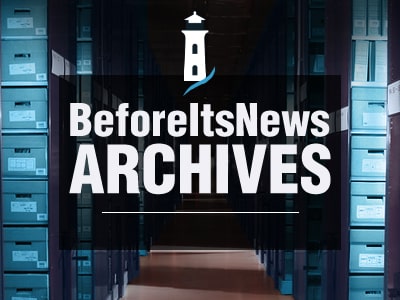DeepSpace: Firefly set for smallsat industry’s second place trophy, Rocket Lab leads the pack

This is a free preview of DeepSpace, Teslarati’s new member-only weekly newsletter. Each week, I’ll be taking a deep-dive into the most exciting developments in commercial space, from satellites and rockets to everything in between. Sign up for Teslarati’s newsletters here to receive a preview of our membership program.
In the race to a field dedicated smallsat launch vehicles, New Zealand startup Rocket Lab has already won first place, a fact that has been discussed several times in past Deep Space issues. After completing its first launch of 2019 on March 28th, Rocket Lab’s Electron rocket is ready for another mission as early as May 4th, a good sign for the company’s planned monthly launch cadence.
Despite Rocket Lab’s major success, there is plenty of room for additional competitors and/or complementary vehicles. Electron’s maximum payload hovers around ~225 kg (500 lb) to low Earth orbit (LEO), limiting its usefulness for any payloads that are larger than truly tiny satellites or in need of higher orbits. Also discussed on DeepSpace, there are 10+ serious startups with funding and hardware in work attempting to build said smallsat launch vehicles, ranging from the extremely tiny (Vector: 60 kg to LEO) to much larger rockets from companies like Relativity, ABL Space, and more. Firefly Space, however, is the startup that has arguably broken away from the pack in the last few months, firmly setting itself up to be second in line behind Rocket Lab.
Build, test, qualify
- Firefly’s major leaps forward came in December 2018 and then April 2019, both related to testing the completed upper stage of the company’s Alpha rocket.
- In December, the upper stage ignited for the first time. In April, the same upper stage successfully performed a mission-duration static fire that lasted a full 300 seconds (five minutes), the same length required for a rocket to reach orbit after separating from Alpha’s first stage.
- For any launch vehicle development program, the first successful mission-duration test fire of an integrated rocket stage is arguably one of the most important milestones, second only to the same hardware’s inaugural launch.
- Simultaneously, Firefly began integrated testing of the thrust section and Reaver engines that will be the basis of Alpha’s first stage. The rocket’s Lightning second stage engine has been tested extensively at this point in development, although the stage’s lone engine produces a maximum of ~70 kN (~16,000 lbf) of thrust.
- The booster’s four Reaver engines will each produce ~170 kN (55,000 lbf) of thrust, around three times as much as Lightning. Alpha’s second stage is critical, but its first stage is arguably far more complex.
- Despite the relative power differential, it’s still worth noting that Alpha’s entire first stage (736 kN/166,000 lbf) will be significantly less powerful than a single one of Falcon 9’s nine Merlin 1D engines (941 kN/212,000 lbf).
- Although Alpha is far smaller than rockets like Falcon 9 or Atlas V, it will nominally be capable of launching 1000 kg to an altitude of 200 km (LEO) or ~650 kg to a 500-km sun-synchronous orbit (SSO). This translates to around 4.2X the performance of Rocket Lab’s Electron at 2.5X the cost per launch ($15M vs $6M).
- Assuming no payload capacity is wasted, Alpha could thus be almost 50% cheaper than Electron when judged by cost per kilogram to orbit.
- Of course, this comparison ignores the fact that Firefly will have to far more heavily rely on booking co-passenger satellites to keep Alpha launch prices competitive with Electron.
- If exactly 1000kg or 630kg of cargo can’t be booked each launch, the expendable Alpha’s $15M launch cost will be distributed over less payload, raising costs for each customer. In other words, the competitive advantages of Alpha are almost entirely associated with its ability to launch payloads outside of Electron’s capabilities, as are its potential weaknesses.
Firefly Alpha’s upper stage qualification article (top) and a comparison of a variety of launch vehicles. (Teslarati)
The sweet spot
- In theory, Firefly Alpha’s could find itself in a relatively sweet spot, where the rocket’s launch costs are not so high that dedicated rideshare missions become intractable (i.e. Spaceflight’s SSO-A launch on Falcon 9) but its payload performance is still good enough to provide access to a huge swath of the space launch market.
- Firefly also has plans to develop a heavier launch vehicle based on Alpha, known as Beta. Conceptually equivalent to SpaceX’s Falcon Heavy, Beta would use three Alpha boosters and a significantly upgraded second stage and would be able to launch 4000 kg to LEO or 3000 kg to SSO.
- Regardless of Firefly’s grander aspirations, Alpha is poised to capitalize on the simple fact that it will be the second commercially viable smallsat launch vehicle to begin operations. Alpha’s first orbital launch attempt could occur as early as December 2019, although slips into early 2020 are to be expected.
- At that point, Rocket Lab’s Electron will be the only serious competition on the market. Relativity’s Terran and ABL Space’s RS-1 rockets plan to offer a competitive ~1250 kg to LEO or ~900 kg to SSO, but their launch debuts are tentatively scheduled no earlier than late 2020.
- If Alpha’s development continues smoothly, Firefly could easily have a solid 12-month head start over its similarly-sized competitors,
- Up next for Alpha is a similar campaign of tests focused on the first integrated booster, including tests fires and an eventual mission-duration qualification test.
- SpaceX’s CRS-17 Cargo Dragon resupply mission has slipped an additional four days from April 30th to May 3rd (3:11 am EDT, 07:11 UTC) after the International Space Station (ISS) began suffering serious (but non-threatening) electrical issues. Additional launch delays could follow if the issue is not resolved in the next few days.
- The first operational Starlink launch remains firmly on track for NET mid-May. According to SpaceX, all Flight 1 satellites are already in Florida, while the FCC approved the company’s modified constellation license – permitting Starlink operations after launch – on April 26th.
- Due to CRS-17’s launch delays, the availability of SpaceX’s LC-40 pad will now likely be the main limiting factor for the Starlink-1 launch date.
- SpaceX’s second West Coast launch of 2019 – carrying Canada’s Radarsat Constellation – is now expected to occur no earlier than mid-June and will reuse Falcon 9 B1051.
- SpaceX’s launch of Spacecom’s Amos-17 spacecraft is now scheduled no earlier than July. Falcon Heavy Flight 3 is tentatively scheduled for launch as early as June 22 – all three boosters should be on site in Florida within the next week or two.
Photo of the Week:
(SpaceX)
The third Falcon Heavy center core – believed to be B1057 – was spotted eastbound in Arizona on April 16th. On April 26th, SpaceX confirmed that the booster completed its acceptance static fire test at the company’s McGregor, TX facilities, a sure sign that all of Falcon Heavy Flight 3’s major components should be in Florida within the next few weeks.
We’ll see you next week.
Not a member? Become a member today to receive DeepSpace each week!
The post DeepSpace: Firefly set for smallsat industry’s second place trophy, Rocket Lab leads the pack appeared first on TESLARATI.
Source: https://www.teslarati.com/firefly-smallsat-rocket-lab-leaders/
Anyone can join.
Anyone can contribute.
Anyone can become informed about their world.
"United We Stand" Click Here To Create Your Personal Citizen Journalist Account Today, Be Sure To Invite Your Friends.
Before It’s News® is a community of individuals who report on what’s going on around them, from all around the world. Anyone can join. Anyone can contribute. Anyone can become informed about their world. "United We Stand" Click Here To Create Your Personal Citizen Journalist Account Today, Be Sure To Invite Your Friends.
LION'S MANE PRODUCT
Try Our Lion’s Mane WHOLE MIND Nootropic Blend 60 Capsules
Mushrooms are having a moment. One fabulous fungus in particular, lion’s mane, may help improve memory, depression and anxiety symptoms. They are also an excellent source of nutrients that show promise as a therapy for dementia, and other neurodegenerative diseases. If you’re living with anxiety or depression, you may be curious about all the therapy options out there — including the natural ones.Our Lion’s Mane WHOLE MIND Nootropic Blend has been formulated to utilize the potency of Lion’s mane but also include the benefits of four other Highly Beneficial Mushrooms. Synergistically, they work together to Build your health through improving cognitive function and immunity regardless of your age. Our Nootropic not only improves your Cognitive Function and Activates your Immune System, but it benefits growth of Essential Gut Flora, further enhancing your Vitality.
Our Formula includes: Lion’s Mane Mushrooms which Increase Brain Power through nerve growth, lessen anxiety, reduce depression, and improve concentration. Its an excellent adaptogen, promotes sleep and improves immunity. Shiitake Mushrooms which Fight cancer cells and infectious disease, boost the immune system, promotes brain function, and serves as a source of B vitamins. Maitake Mushrooms which regulate blood sugar levels of diabetics, reduce hypertension and boosts the immune system. Reishi Mushrooms which Fight inflammation, liver disease, fatigue, tumor growth and cancer. They Improve skin disorders and soothes digestive problems, stomach ulcers and leaky gut syndrome. Chaga Mushrooms which have anti-aging effects, boost immune function, improve stamina and athletic performance, even act as a natural aphrodisiac, fighting diabetes and improving liver function. Try Our Lion’s Mane WHOLE MIND Nootropic Blend 60 Capsules Today. Be 100% Satisfied or Receive a Full Money Back Guarantee. Order Yours Today by Following This Link.






